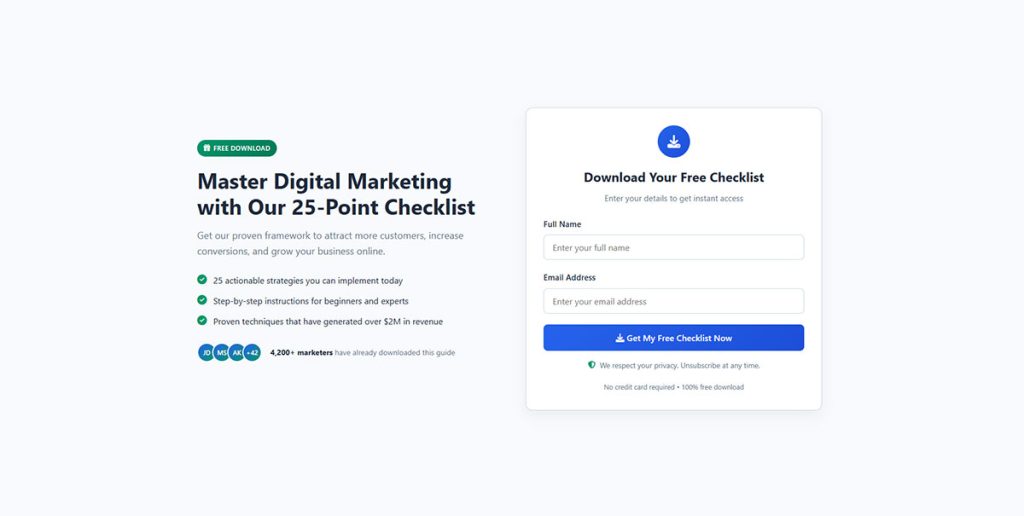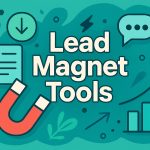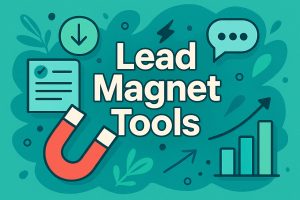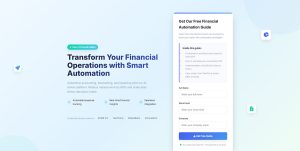Your email list won’t build itself. The best lead magnet tools transform website visitors into subscribers by creating professional content upgrades, interactive calculators, and conversion-optimized landing pages. Without the right…
Table of Contents
Your email list sits empty while competitors grow theirs by hundreds of subscribers daily. The difference? They’re using lead magnets that actually convert.
Understanding the different types of lead magnets available transforms your lead generation strategy from guesswork into a predictable system. Some formats achieve 70% conversion rates while others barely hit 5%.
This guide examines 30 proven lead magnet formats currently driving results for businesses across industries. You’ll discover which types work best for specific audiences, how each format converts, and the resources required to create them.
Whether you’re building your first opt-in offer or improving existing ones, you’ll find practical insights for choosing formats that match your business goals and audience needs. No theory. Just what actually works in 2025.
Types Of Lead Magnets
| Lead Magnet Type | Primary Format | Engagement Depth | Value Proposition |
|---|---|---|---|
| Ebooks | Long-form document (PDF) | High – comprehensive reading | In-depth knowledge on specific topic |
| Whitepapers | Research document (PDF) | High – analytical reading | Data-driven insights and solutions |
| Checklists | List document (PDF/printable) | Low – quick reference | Task completion assurance |
| Templates | Editable file (various formats) | Medium – customization required | Time-saving structure for tasks |
| Cheat Sheets | Quick reference (PDF/image) | Low – instant lookup | Condensed essential information |
| Guides | Instructional document (PDF) | Medium-high – step-by-step learning | Practical how-to instructions |
| Reports | Data document (PDF) | Medium-high – analytical review | Industry insights and trends |
| Webinars | Live/recorded video session | High – interactive learning | Expert instruction with Q&A |
| Email Newsletters | Recurring email content | Low-medium – ongoing engagement | Regular updates and tips |
| Free Trials | Product access (time-limited) | High – hands-on experience | Risk-free product evaluation |
| Free Consultations | One-on-one session (call/video) | High – personalized interaction | Customized expert advice |
| Quizzes | Interactive assessment (web) | Low-medium – brief interaction | Personalized insights or results |
| Surveys | Questionnaire (web form) | Low – data collection | Voice in product/content direction |
| Toolkits | Resource bundle (mixed formats) | Medium-high – multiple resources | Complete solution package |
| Web Apps/Free Tools | Interactive application (web) | Medium-high – active use | Automated problem-solving |
| Video Series | Sequential videos (recorded) | High – progressive learning | Visual step-by-step training |
| Mini-Courses | Structured lessons (mixed media) | High – educational commitment | Skill development program |
| Infographics | Visual data (image/PDF) | Low – quick visual scan | Complex data simplified visually |
| Case Studies | Success story document (PDF) | Medium – detailed review | Real-world proof and strategies |
| Worksheets | Fillable document (PDF/printable) | Medium – active participation | Guided exercises for application |
| Scripts | Text template (PDF/document) | Low – copy and use | Ready-made communication text |
| Meal Plans | Structured schedule (PDF) | Medium – ongoing implementation | Nutrition strategy with recipes |
| Giveaways | Contest entry (web form) | Low – chance-based | Potential prize acquisition |
| Discounts/Coupons | Code/voucher (email/PDF) | Low – immediate redemption | Direct cost savings |
| Calculators | Interactive tool (web) | Low-medium – quick calculation | Personalized numerical results |
| Research Data/Industry Reports | Statistical document (PDF) | High – detailed analysis | Exclusive market intelligence |
| Product Samples | Physical/digital sample | Medium – direct testing | Hands-on product experience |
| Challenges | Program (email series/platform) | High – sustained participation | Guided transformation journey |
| Resource Libraries | Curated collection (web portal) | Medium-high – ongoing access | Comprehensive reference hub |
| Swipe Files | Example collection (PDF/folder) | Low-medium – inspiration browse | Proven examples for modeling |
Ebooks

Digital books packaged as downloadable PDF files that provide in-depth information on specific topics. With 27.7% of marketers using them, ebooks remain the most popular lead generation tool across industries.
Primary Purpose
Ebooks solve the need for comprehensive, actionable knowledge that readers can reference repeatedly. They address specific pain points with detailed solutions that go beyond surface-level blog content.
Ideal Use Cases
B2B companies targeting decision makers who need detailed information before making purchasing decisions.
Service providers looking to establish thought leadership in their industry.
SaaS businesses explaining complex concepts or methodologies to potential customers.
Works best when you have substantial expertise to share and want to build credibility with your target audience.
Key Components
Strong hook addressing a specific problem your audience faces.
Logical chapter structure guiding readers from problem to solution.
Actionable takeaways and frameworks readers can implement immediately.
Visual elements like charts, screenshots, or diagrams breaking up text.
Professional design that reflects your brand quality.
Delivery Format
PDF downloads delivered immediately after form submission. File sizes typically range from 2-10MB.
Some businesses use .epub or .mobi formats for mobile reading, though PDF remains standard.
Creation Requirements
Writing an effective ebook takes 15-40 hours depending on length and depth.
Average length sits between 5,000-10,000 words. Anything shorter might work better as a checklist or guide.
Design software like Canva or Adobe InDesign for layout.
Subject matter expertise (obviously, but you’d be surprised how many skip this part).
Budget typically runs $2,500-6,000 if outsourcing the entire project.
Conversion Optimization
Ebooks convert at 100% for short-form written content according to 55.9% of businesses surveyed.
But here’s the catch: generic ebooks perform poorly. The more specific and targeted, the better.
Keep your opt-in form to 3-4 fields. More than that and conversion rates drop from 35% to 25%.
Create a compelling landing page showing exactly what readers will learn.
Target Audience Fit
B2B professionals researching solutions (they have time to read).
Middle-of-funnel prospects who already understand their problem.
Industries like healthcare, finance, and technology where detailed documentation matters.
Less effective for B2C audiences seeking quick answers or entertainment.
Whitepapers

Research-driven documents presenting data, analysis, and recommendations on industry-specific challenges. More formal and technical than ebooks, whitepapers position your brand as an authoritative source.
Primary Purpose
Whitepapers help B2B buyers make informed decisions by presenting unbiased research, case evidence, and technical specifications. They address complex industry problems requiring detailed analysis.
Ideal Use Cases
Technology companies explaining new solutions or methodologies.
Consulting firms sharing original research and market insights.
Enterprise software vendors supporting lengthy sales cycles.
Manufacturing businesses presenting technical specifications and performance data.
Best deployed in industries where purchase decisions involve multiple stakeholders and significant investment.
Key Components
Executive summary presenting key findings upfront.
Problem statement backed by industry data and statistics.
Methodology explaining how research was conducted.
Detailed analysis with charts, graphs, and data visualizations.
Actionable recommendations based on findings.
Citations and sources establishing credibility.
Delivery Format
PDF documents typically 8-20 pages long.
Professional layout with branded design elements.
Often gated behind forms requiring business email addresses.
Creation Requirements
Research phase: 20-40 hours gathering data and conducting analysis.
Writing and editing: 30-50 hours for comprehensive content.
Design and formatting: 10-15 hours for professional presentation.
Budget: $2,500-6,000 for professionally created whitepapers.
Requires genuine industry expertise. You can’t fake this one.
Conversion Optimization
Whitepapers achieve 37.7% conversion rates for long-form content.
Companies using 5-step nurture sequences see 38% higher conversion compared to standard follow-up.
The sequence: immediate thank you (24-48 hours), engagement deepening (5-7 days), problem expansion (10-14 days), case evidence (21 days), consultation offer (28-30 days).
Syndicated whitepapers through industry-specific channels get 4.2x more engagement than general platforms.
Target placement matters. IT buyers rated whitepapers as the second most effective content type at 91%.
Target Audience Fit
B2B decision makers in complex sales cycles (4-8 months).
Technical buyers needing detailed specifications.
Industries: technology, healthcare, finance, manufacturing, energy.
High-value purchases where detailed evaluation is standard.
Checklists

Step-by-step task lists helping users complete specific processes without missing critical steps. Simple, scannable, immediately useful.
Primary Purpose
Checklists reduce overwhelm by breaking complex processes into manageable, sequential actions. They prevent mistakes and ensure nothing gets overlooked.
Ideal Use Cases
Agencies teaching clients how to prepare for projects.
SaaS companies helping users implement new workflows.
Service providers guiding prospects through decision-making processes.
Any situation where your audience needs to complete a multi-step task correctly.
Checklists work at all funnel stages but shine at top-of-funnel for quick wins.
Key Components
Clear title stating exactly what the checklist accomplishes.
Numbered or checkbox format for easy tracking.
Brief descriptions explaining why each step matters.
Logical sequence from start to finish.
Visual appeal making it easy to scan quickly.
Delivery Format
Single-page PDF or printable document.
Some brands use interactive digital formats with actual checkboxes.
File sizes stay small (under 1MB).
Can be delivered via email or instant download on thank-you pages.
Creation Requirements
Research: 2-4 hours identifying steps and best practices.
Creation: 1-3 hours writing and designing.
Design tools: Canva, Google Docs, or specialized checklist templates.
Minimal budget needed. Can create in-house for under $200.
Conversion Optimization
Short-form written content (including checklists) generates highest conversion rates according to 58.6% of marketers.
Keep it focused. 5-15 items works best. Longer loses effectiveness.
Make it visually appealing. People judge quality by design.
Create checklist versions of your most popular blog content for higher opt-in rates.
Target Audience Fit
Time-pressed professionals needing quick reference guides.
DIY audiences wanting to tackle projects themselves.
First-time users of products or services.
Works across both B2B and B2C audiences.
Templates
Pre-built frameworks users can customize for their specific needs. Templates save hours of work by providing structure and best practices.
Primary Purpose
Templates eliminate the “blank page problem” by giving users a proven starting point. They transform abstract concepts into concrete, actionable formats.
Ideal Use Cases
Marketing agencies sharing campaign frameworks.
Design studios offering branding templates.
Business consultants providing strategic planning tools.
Software companies giving users configuration templates.
Perfect for any industry where your audience repeatedly performs similar tasks.
Key Components
Clear instructions explaining how to use and customize.
Professional design that users want to replicate.
Editable format in commonly used software.
Example content showing proper usage.
Flexibility allowing customization without breaking structure.
Delivery Format
Excel spreadsheets, Google Sheets, PowerPoint, Google Docs, Figma files, Notion databases.
Format depends on template type and target audience preferences.
Include both blank and example versions when possible.
Creation Requirements
Design time: 4-10 hours creating professional template.
Testing: 2-4 hours ensuring it works as intended.
Documentation: 1-2 hours writing usage instructions.
Software: Tools your audience already uses (don’t make them download new software).
Budget: $200-800 for professional template creation.
Conversion Optimization
Templates are among the easiest and most effective lead magnets to create.
Higher perceived value than checklists despite similar creation effort.
Create multiple templates addressing different audience segments for better targeting.
Templates naturally lead to product sales. Users who succeed with your free template want more.
Use multi-step forms to qualify leads while they’re downloading.
Target Audience Fit
Hands-on practitioners who implement strategies themselves.
Small business owners lacking specialized resources.
Freelancers and solopreneurs building processes.
Works best with audiences valuing efficiency over custom solutions.
Cheat Sheets
Quick-reference guides condensing complex information into scannable formats. Think of them as knowledge shortcuts.
Primary Purpose
Cheat sheets help users access critical information quickly without digging through lengthy resources. They serve as performance support tools during task execution.
Ideal Use Cases
Software companies providing keyboard shortcuts or feature guides.
Marketing agencies sharing social media dimensions or ad specifications.
Training companies condensing course material into study aids.
Any business where users need quick access to detailed information.
Key Components
Dense information presented in highly organized layouts.
Visual hierarchy making key points immediately visible.
Tables, columns, or grids organizing related information.
Minimal text. Maximum information density.
Print-friendly design for desk reference.
Delivery Format
Single-page PDF optimized for printing.
Landscape orientation often works better for tables and grids.
High-quality graphics that remain readable when printed.
Creation Requirements
Research: 3-5 hours compiling and verifying information.
Design: 2-4 hours creating scannable layout.
Tools: Graphic design software with precise layout control.
Budget: $150-500 for professional creation.
Requires deep knowledge of subject matter.
Conversion Optimization
Functions similarly to checklists with high conversion rates.
Lower perceived value than ebooks, but faster to consume.
Perfect for capturing busy professionals who want quick wins.
Works exceptionally well as content upgrades on related blog posts.
Include your branding prominently. These get shared frequently.
Target Audience Fit
Experienced users needing reference materials, not education.
Technical audiences working with specifications and standards.
Students and learners creating study materials.
Anyone who hates searching through documentation.
Guides
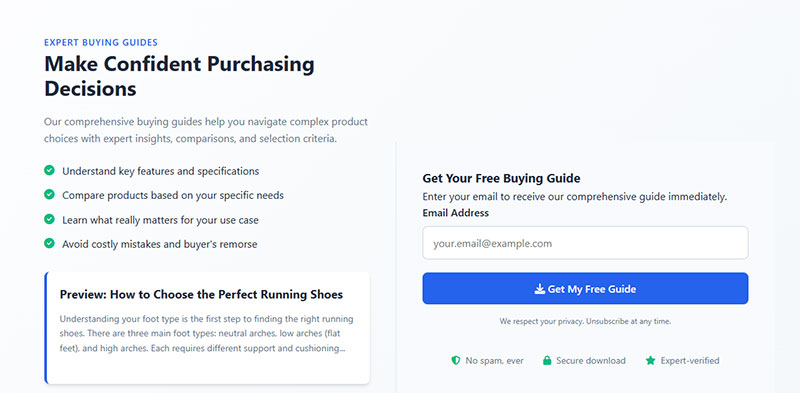
Comprehensive how-to resources walking users through complete processes. More detailed than checklists, less formal than ebooks.
Primary Purpose
Guides teach users how to accomplish specific objectives from start to finish. They bridge the gap between general knowledge and successful execution.
Ideal Use Cases
Agencies demonstrating their methodology.
SaaS companies showing implementation processes.
Service providers educating prospects about options.
Content businesses establishing authority on specific topics.
Key Components
Clear outcome statement. What will users accomplish?
Step-by-step instructions with explanations.
Screenshots, diagrams, or visuals for each major step.
Troubleshooting tips for common obstacles.
Resources and tools needed for completion.
Delivery Format
PDF documents typically 10-30 pages.
Online HTML guides with navigation menus.
Video walkthroughs paired with written documentation.
Creation Requirements
Research and outline: 5-10 hours.
Writing and screenshots: 15-25 hours.
Design and formatting: 8-12 hours.
Budget: $1,500-4,000 for comprehensive guides.
Conversion Optimization
Guides achieve the highest conversion rate among long-form written content at 67.2%.
That’s significantly higher than reports (49.2%) or whitepapers (37.7%).
The sweet spot: tactical enough to provide immediate value, comprehensive enough to demonstrate expertise.
Create guides for your most frequently asked questions.
Target Audience Fit
Action-oriented learners who implement while reading.
Middle-of-funnel prospects evaluating your methodology.
B2B buyers in longer sales cycles.
Technical audiences needing detailed procedures.
Reports
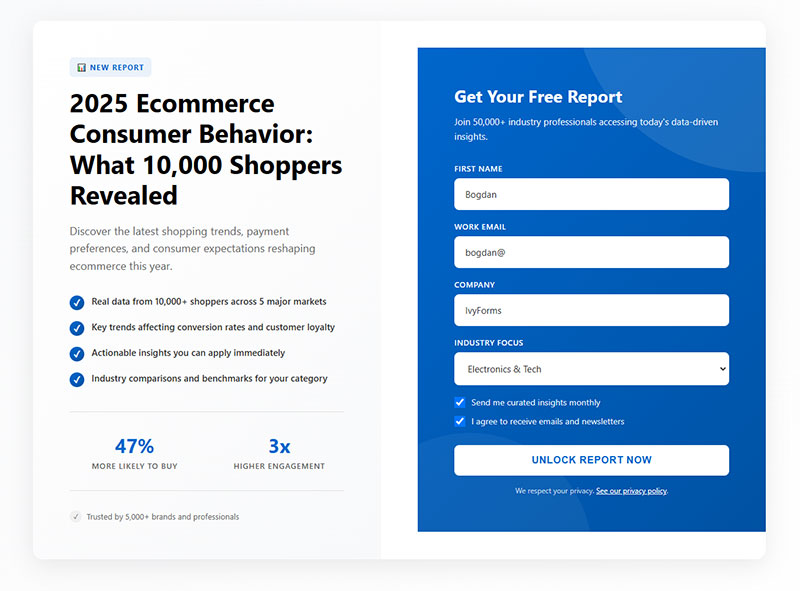
Data-driven documents presenting research findings, industry trends, or performance analytics. Reports position you as an information authority.
Primary Purpose
Reports satisfy audience hunger for data-backed insights they can’t find elsewhere. They support strategic decision-making with concrete evidence.
Ideal Use Cases
Research firms publishing industry studies.
Marketing agencies sharing trend analyses.
SaaS companies revealing usage benchmarks.
Professional services firms presenting market data.
Works best when you have proprietary data or unique research access.
Key Components
Executive summary for busy readers.
Methodology section explaining data collection.
Data visualizations (charts, graphs, infographics).
Key findings and insights.
Implications and recommendations.
Raw data or appendices for detail-oriented readers.
Delivery Format
PDF reports typically 15-40 pages.
Interactive online dashboards for real-time data.
Slide deck format for presentation-friendly content.
Creation Requirements
Data collection and analysis: 30-60 hours.
Writing and insights: 20-30 hours.
Design and visualization: 15-25 hours.
Budget: $4,000-8,000 for comprehensive reports.
Requires analytical expertise and data access.
Conversion Optimization
Reports convert at 49.2% for long-form written content.
Higher conversion when data is proprietary or exclusive.
Promote through press releases and media outreach for amplification.
Partner with industry associations for increased credibility.
Annual reports create recurring lead generation opportunities.
Target Audience Fit
Data-driven decision makers.
B2B buyers requiring evidence before purchases.
Media and journalists looking for newsworthy data.
Industry analysts and researchers.
Webinars
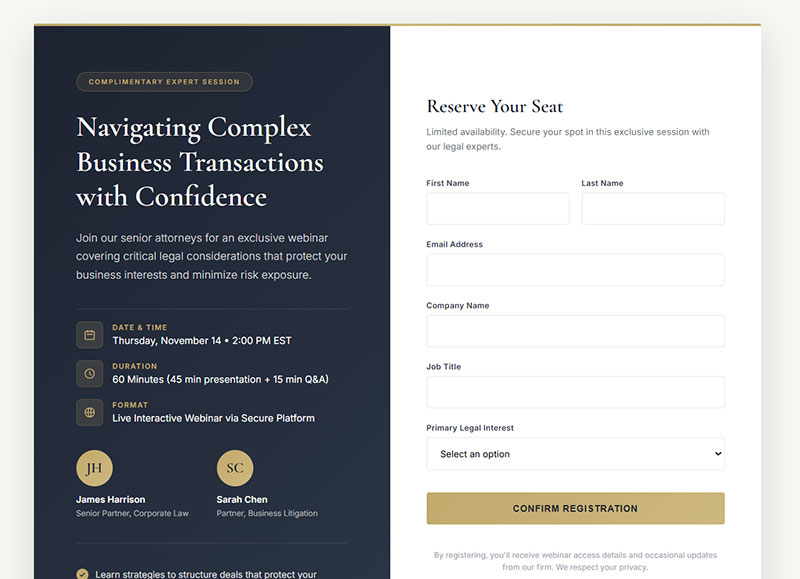
Live or recorded online presentations combining education, demonstration, and interaction. The highest-converting long-form video format.
Primary Purpose
Webinars build trust through face-to-face interaction while educating audiences on complex topics. They compress weeks of research into one focused session.
Ideal Use Cases
Software companies demonstrating products.
Consultants teaching methodologies.
Agencies showcasing expertise and approach.
Training companies offering course samples.
Perfect for high-consideration purchases requiring education.
Key Components
Compelling topic addressing specific audience pain point.
Clear learning objectives stated upfront.
Engaging presentation with visual aids.
Live Q&A for audience interaction.
Call-to-action aligned with audience readiness.
Recording for on-demand viewing.
Delivery Format
Live streaming platforms (Zoom, WebEx, specialized webinar software).
Duration: 30-60 minutes (44% prefer 45 minutes, 41% prefer 30).
On-demand recordings extending shelf life.
Repurposed content (blog posts, social clips, email sequences).
Creation Requirements
Topic research and outline: 4-6 hours.
Slide deck creation: 6-10 hours.
Promotion campaign: 10-15 hours across 4 weeks.
Platform costs: $100-3,000 depending on attendee limits.
Presenter time and rehearsal: 5-8 hours.
Conversion Optimization
Webinars achieve 70.2% conversion rate among long-form video content.
Landing pages convert up to 51% of visitors into registrants.
20-40% of attendees become qualified leads entering sales pipeline.
Average webinar conversion rate: 56% complete desired action.
Training webinars convert at 44%, communication webinars at 67%, marketing webinars at 39%.
53% of marketers identify webinars as creating the highest quality leads among top-of-funnel channels.
Promote 4 weeks in advance for 12% higher registrations.
Email generates 57% of registrations (most effective channel).
Target Audience Fit
B2B buyers in evaluation phase.
Technical users needing product demonstrations.
Industries: SaaS, consulting, professional services, healthcare.
Middle and bottom-of-funnel prospects ready for deeper engagement.
Email Newsletters

Regular email publications delivering curated content, insights, or updates to subscribers. Newsletters build ongoing relationships rather than one-time downloads.
Primary Purpose
Newsletters keep your brand top-of-mind through consistent value delivery. They nurture relationships over time rather than making immediate asks.
Ideal Use Cases
Content creators building loyal audiences.
B2B companies maintaining prospect engagement during long sales cycles.
E-commerce brands promoting products and building community.
Thought leaders establishing industry authority.
Key Components
Consistent publishing schedule (weekly, biweekly, monthly).
Valuable content subscribers can’t get elsewhere.
Clear editorial focus or theme.
Mix of content types (articles, tips, curated links, announcements).
Conversational tone building personal connection.
Delivery Format
HTML emails sent through email marketing platforms.
Plain text versions for purists and accessibility.
Mobile-optimized layouts (58% read on mobile devices).
Creation Requirements
Content creation: 2-4 hours per issue.
Design and formatting: 1-2 hours per issue.
Email platform costs: $10-300+ monthly depending on list size.
Ongoing commitment. Newsletters require consistency.
Conversion Optimization
Short-form written content shows highest conversion according to 58.6% of marketers.
Newsletter subscribers are warmer leads than one-off download seekers.
Include clear subscription forms on blog posts and landing pages.
Offer content preview or past issues to show value.
Double opt-in ensures quality subscribers.
Target Audience Fit
Engaged audiences wanting regular industry updates.
B2B professionals researching over extended periods.
Community-focused brands building loyal followings.
Works across all industries and funnel stages.
Free Trials

Image source: denisedt.com
Limited-time access to your product or service without payment. Trials let prospects experience value firsthand before committing.
Primary Purpose
Free trials remove purchase risk by allowing hands-on product evaluation. They convert curiosity into conviction through direct experience.
Ideal Use Cases
SaaS companies selling subscription software.
Online services with demonstrable immediate value.
Digital tools solving specific user problems.
Membership sites offering content libraries.
Key Components
Clear trial duration (7, 14, or 30 days most common).
Full or limited feature access depending on strategy.
Smooth onboarding process maximizing value realization.
In-app guidance helping users reach “aha moments.”
Email sequences educating and encouraging usage.
Delivery Format
Direct product access through user account creation.
Credit card requirements vary (no-CC trials convert higher but attract lower quality leads).
Automated provisioning for instant access.
Creation Requirements
Product must be trial-ready (stable, onboarding-optimized).
Email automation sequences: 10-15 hours setup.
In-app messaging and guidance systems.
Analytics tracking user behavior and engagement.
Support resources for trial users.
Conversion Optimization
Free trials work best in middle-of-funnel after prospects understand their need.
Offer post-demo or post-webinar to capitalize on interest.
No credit card required increases conversion but lowers lead quality.
Time-based urgency (trial expiration) drives decision-making.
B2C trials show higher conversion rates than B2B.
Usage data helps identify high-intent prospects for sales outreach.
Target Audience Fit
Tech-savvy users comfortable with self-service evaluation.
Product-led growth strategies.
Lower-priced solutions (under $500/month).
Purchases not requiring extensive implementation.
Free Consultations
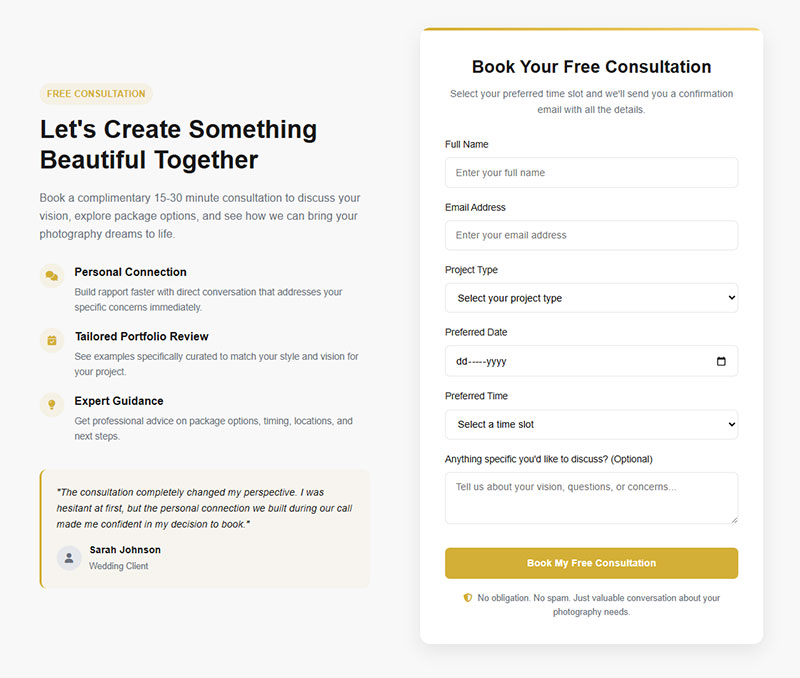
Complimentary one-on-one sessions providing personalized advice or assessment. Consultations build trust through direct value delivery.
Primary Purpose
Free consultations demonstrate expertise while understanding prospect-specific needs. They transform abstract capabilities into concrete recommendations.
Ideal Use Cases
Service businesses (consultants, agencies, coaches).
High-ticket B2B sales requiring relationship building.
Complex solutions needing customization.
Professional services (legal, financial, healthcare).
Key Components
Clear scope and time limit (30-60 minutes typical).
Structured format addressing specific prospect challenges.
Discovery questions revealing needs and qualification criteria.
Actionable recommendations during call.
Clear next steps toward becoming a customer.
Delivery Format
Video calls (Zoom, Google Meet) for face-to-face connection.
Phone consultations for audio-only preference.
Scheduled through booking forms integrated with calendars.
Confirmation and reminder sequences ensuring attendance.
Creation Requirements
Consultation framework and question bank: 4-6 hours.
Calendar booking system setup: 2-3 hours.
Email automation (confirmation, reminders, follow-up): 3-4 hours.
Time commitment: 1-2 hours per consultation including prep and notes.
Conversion Optimization
Works at bottom-of-funnel with prospects ready for personalized guidance.
Qualify leads before offering consultations using form fields capturing budget, timeline, specific needs.
Limit availability to create scarcity and perceived value.
Record key points for CRM documentation and personalized follow-up.
Offer alternatives (group sessions, paid consultations) for unqualified leads.
Target Audience Fit
High-value prospects in active buying mode.
Services requiring trust and personal connection.
Complex solutions where one-size-fits-all doesn’t work.
B2B buyers needing vendor assessment.
Quizzes
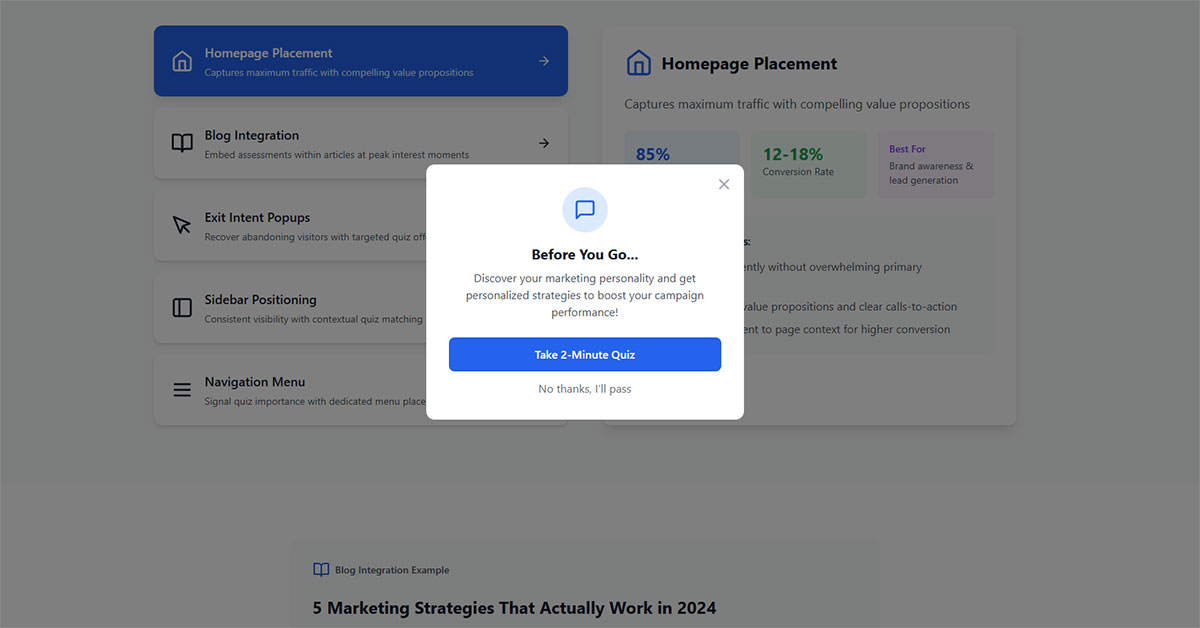
Interactive assessments providing personalized results based on user responses. Quizzes engage through curiosity and self-discovery.
Primary Purpose
Quizzes segment audiences while entertaining them. They reveal insights about users while giving users insights about themselves.
Ideal Use Cases
Personality-driven brands creating engagement.
Diagnostic tools helping users identify problems.
Product recommendation engines matching needs to solutions.
Educational content assessing knowledge levels.
Key Components
7-15 questions hitting sweet spot between thorough and tedious.
Engaging visuals making quiz appealing.
Multiple result types creating curiosity.
Personalized outcome pages with relevant recommendations.
Social sharing buttons extending reach.
Delivery Format
Web-based interactive tools requiring no downloads.
Mobile-optimized for on-the-go completion.
Results delivered on completion page and via email.
Creation Requirements
Quiz logic and questions: 6-10 hours.
Results content creation: 8-12 hours.
Design and development: 10-20 hours or quiz builder subscription.
Testing across devices: 2-3 hours.
Budget: $500-2,000 depending on complexity.
Conversion Optimization
Quizzes achieve 31.6% average lead capture rate.
High-quality examples hit 38.8% conversion.
One coaching company saw 400% increase in email subscribers after adding quiz.
Question requirement builds friction attracting quality leads while filtering low-intent users.
Use results as segmentation for personalized follow-up campaigns.
Target Audience Fit
Curious audiences seeking self-knowledge.
Purchase decisions benefiting from guided discovery.
Top-of-funnel awareness building.
B2C audiences and B2B personal development niches.
Surveys
Data collection tools gathering audience opinions, preferences, or feedback. Surveys provide reciprocal value through aggregated insights.
Primary Purpose
Surveys give audiences a voice while providing you valuable market intelligence. They build engagement through participation and shared results.
Ideal Use Cases
Research-driven businesses gathering industry data.
Product development teams seeking user input.
Content creators understanding audience needs.
Community-focused brands involving members in decisions.
Key Components
5-15 questions balancing thoroughness with completion rates.
Mix of question types (multiple choice, scale, open-ended).
Clear explanation of how results will be used.
Promise of aggregated results shared back.
Anonymous option increasing honest responses.
Delivery Format
Web-based survey tools (Google Forms, Typeform, SurveyMonkey).
Embedded directly on websites or sent via email.
Mobile-friendly for easy completion.
Progress indicators for longer surveys.
Creation Requirements
Question development: 3-5 hours.
Survey setup in tool: 1-2 hours.
Results analysis and reporting: 8-15 hours.
Design of results document or report: 5-8 hours.
Total budget: $300-1,000 including tool costs.
Conversion Optimization
Keep surveys under 10 minutes for completion.
Offer incentive for completion (results report, contest entry).
Use survey form templates to streamline creation.
Share aggregated results as secondary lead magnet.
Follow proper survey question practices avoiding bias.
Target Audience Fit
Engaged audiences wanting to contribute opinions.
B2B professionals interested in industry trends.
Community members invested in brand direction.
Research-minded individuals valuing data insights.
Toolkits
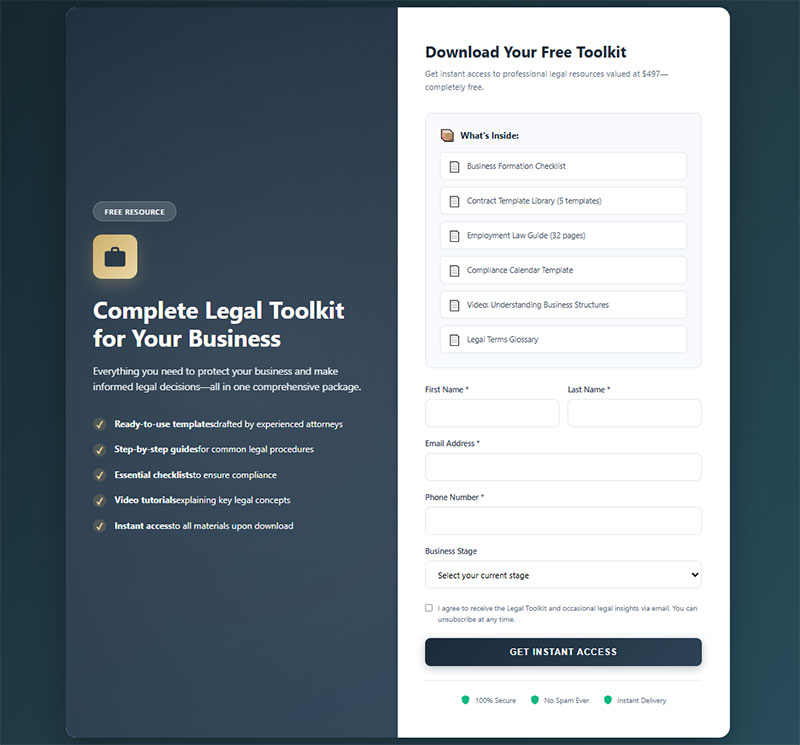
Collections of multiple resources bundled together addressing comprehensive needs. Toolkits deliver maximum value through quantity and variety.
Primary Purpose
Toolkits eliminate the need to search multiple sources by providing everything required for success in one package. They position you as the complete solution.
Ideal Use Cases
Agencies providing complete starter packages for clients.
Businesses launching new initiatives or products.
Educational companies supporting course launches.
Comprehensive solutions to complex, multi-faceted problems.
Key Components
3-7 complementary resources working together.
Clear organization with instructions for each component.
Mix of formats (templates, checklists, guides, examples).
Unified branding across all toolkit elements.
Getting started guide explaining optimal usage sequence.
Delivery Format
ZIP files containing multiple documents.
Shared folder links (Google Drive, Dropbox).
Membership site access providing downloadable resources.
Physical toolkit mailings for premium offers.
Creation Requirements
Planning and content strategy: 6-10 hours.
Creation of individual components: 30-50 hours total.
Packaging and organization: 4-6 hours.
Budget: $2,000-5,000 for comprehensive toolkit.
Requires diverse content creation skills or team collaboration.
Conversion Optimization
Higher perceived value than single resources despite similar creation effort per component.
Can repurpose existing content into cohesive packages.
Premium positioning justifies longer forms and more qualification questions.
Great for segmentation – offer different toolkits for different audience needs.
Use registration forms capturing more detailed lead information.
Target Audience Fit
Serious prospects ready to invest significant time.
Middle-of-funnel leads evaluating comprehensive solutions.
DIY audiences wanting complete self-service packages.
B2B buyers preferring thorough resources over sales conversations.
Web Apps and Free Tools
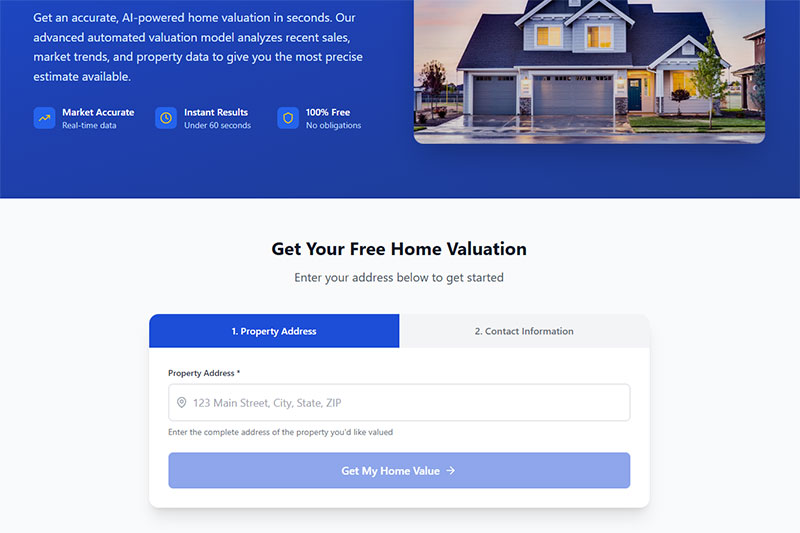
Interactive software providing immediate utility without requiring full product purchase. Tools demonstrate capabilities while solving real problems.
Primary Purpose
Free tools deliver instant value while showcasing your technical capabilities. They create “wow moments” leading to product consideration.
Ideal Use Cases
SaaS companies offering simplified versions of paid features.
Marketing agencies providing calculators or analyzers.
Financial services offering planning tools.
Technical businesses demonstrating expertise through functionality.
Key Components
Single-purpose focus solving specific problem.
Intuitive interface requiring minimal instruction.
Instant results or output.
Clear path to paid upgrade or additional services.
Data collection for lead capture and qualification.
Delivery Format
Web-based applications requiring no installation.
Mobile-responsive functionality.
Freemium model (basic free, advanced paid).
Email gate for results or saved data.
Creation Requirements
Product specification and planning: 10-15 hours.
Development and testing: 40-120 hours depending on complexity.
Design and UX optimization: 15-25 hours.
Budget: $5,000-25,000 for professional development.
Ongoing maintenance and hosting costs.
Conversion Optimization
Interactive tools generate 11.8% of highest conversion types.
Engagement time averages 4.5 minutes versus 2.1 minutes for static content.
Tools achieve 50% higher conversion than traditional ebooks.
One business achieved 40% conversion with interactive calculator versus 5% for PDF case studies.
Produce 3x more qualified leads through detailed data collection.
Two-stage approach: allow initial use, then request information for advanced features or saved results.
Target Audience Fit
Action-oriented users wanting immediate solutions.
Tech-comfortable audiences appreciating self-service.
Middle and bottom-of-funnel prospects evaluating capabilities.
Industries where calculations or assessments support decisions.
Video Series
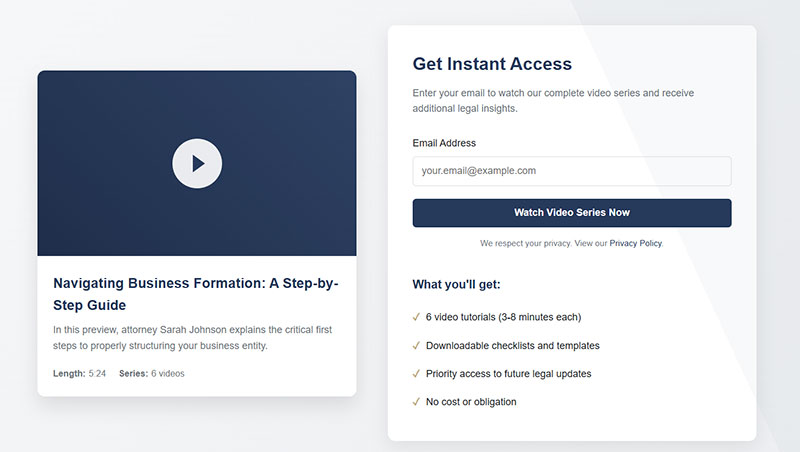
Sequential video content teaching complete concepts or processes over multiple episodes. Series build anticipation and habitual engagement.
Primary Purpose
Video series maintain ongoing contact through episodic content delivery. They establish authority while creating consumption habits leading to customer relationships.
Ideal Use Cases
Educational businesses offering course previews.
Complex topics benefiting from progressive learning.
Personality-driven brands building followings.
Multi-step processes requiring demonstration.
Key Components
3-7 videos creating complete learning arc.
10-15 minutes per video hitting engagement sweet spot.
Progressive difficulty or sequential concepts.
Clear value hook for each episode.
Calls-to-action appropriate for viewer progress.
Delivery Format
Email drip sequence releasing videos over time.
Membership site requiring registration for access.
YouTube playlist with email notifications.
Hosted video platform with viewing analytics.
Creation Requirements
Content planning and scripting: 10-15 hours.
Filming all episodes: 8-20 hours.
Editing and production: 20-40 hours.
Platform setup and automation: 5-8 hours.
Budget: $2,000-6,000 for professional series.
Conversion Optimization
Video clips achieve 55.7% conversion for short-form video content.
Short tutorials convert at 54.1%, video samples at 46.7%.
73% of marketers report short-form video outperforms long-form.
Series format creates multiple touchpoints increasing conversion opportunity.
Include lead capture forms between episodes for progressive profiling.
Target Audience Fit
Visual learners preferring demonstration over reading.
Audiences consuming content on mobile devices.
Top and middle-of-funnel education and awareness.
Works across B2B and B2C depending on content depth.
Mini-Courses

Structured educational experiences teaching complete skills or concepts over multiple lessons. More comprehensive than video series, less formal than paid courses.
Primary Purpose
Mini-courses demonstrate your teaching ability and methodology while delivering genuine skill development. They preview paid offerings and build student relationships.
Ideal Use Cases
Online course creators showcasing teaching style.
Consultants packaging expertise into scalable formats.
Software companies teaching product-adjacent skills.
Professional development in specific competencies.
Key Components
3-7 lessons with clear learning objectives.
Mix of content formats (videos, worksheets, readings).
Assignments or exercises applying concepts.
Progress tracking encouraging completion.
Certificate or achievement acknowledgment.
Delivery Format
Email courses delivering lessons sequentially.
Learning management system (LMS) platform access.
Dripped content over 1-2 weeks.
Mobile and desktop compatibility.
Creation Requirements
Curriculum development and lesson planning: 15-25 hours.
Content creation (videos, documents, exercises): 40-60 hours.
Platform setup and automation: 10-15 hours.
Budget: $3,000-8,000 for complete mini-course.
Teaching or instructional design experience helpful.
Conversion Optimization
Courses convert at 31.1% for email courses in long-form written content.
64% of marketers find courses effective as lead magnets.
Higher commitment requirement filters for quality leads.
Completion rates indicate genuine interest and engagement.
Graduates become warm prospects for advanced paid programs.
Target Audience Fit
Self-motivated learners willing to invest time.
Middle-of-funnel prospects evaluating teaching quality.
Professional development seekers.
B2B and B2C audiences in education and training verticals.
Infographics

Visual data presentations making complex information accessible through graphics, icons, and minimal text. Infographics combine information and design.
Primary Purpose
Infographics transform dense data into scannable, shareable visuals. They make statistics and concepts memorable through visual storytelling.
Ideal Use Cases
Data-rich industries presenting research findings.
Complex processes requiring visual explanation.
Statistical content supporting thought leadership.
Social media-focused brands maximizing shareability.
Key Components
Compelling headline and clear narrative flow.
Data visualizations (charts, graphs, icons).
Color scheme and typography creating visual hierarchy.
Balanced layout guiding eye through content.
Branding elements for attribution when shared.
Source citations adding credibility.
Delivery Format
High-resolution image files (JPG, PNG).
PDF for printing and detailed viewing.
Interactive web-based versions for engagement.
Social media-optimized sizes.
Creation Requirements
Research and data gathering: 4-8 hours.
Conceptual design and planning: 4-6 hours.
Design and production: 10-20 hours.
Budget: $500-2,000 for professional design.
Graphic design expertise required.
Conversion Optimization
Visual content types achieve 11.8% of highest conversions.
Infographics increase website traffic by 12%.
30x more likely to be read than pure text articles.
Social sharing extends reach beyond initial audience.
Embed as content upgrades on data-heavy blog posts.
Include downloadable versions behind opt-in forms.
Target Audience Fit
Visual learners and quick scanners.
Social media users sharing valuable content.
Data-driven professionals wanting quick insights.
Top-of-funnel awareness and education.
Case Studies
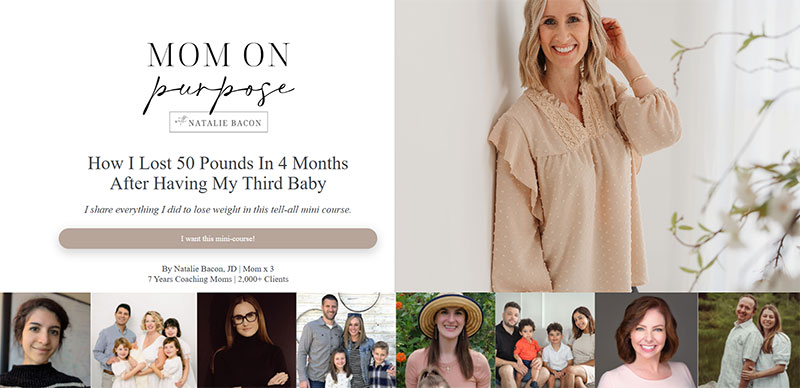
Image source: momonpurpose.com
Detailed examinations of customer success stories showing how your solution solved specific problems. Case studies provide social proof and practical application.
Primary Purpose
Case studies reduce purchase risk by demonstrating real-world results. They help prospects envision themselves achieving similar outcomes.
Ideal Use Cases
B2B companies with measurable client results.
Service businesses showcasing methodology application.
Software companies demonstrating ROI.
Complex solutions requiring proof of effectiveness.
Key Components
Client background and initial challenge.
Specific solution or approach implemented.
Implementation process and timeline.
Quantifiable results and metrics.
Client testimonials and quotes.
Visual elements (charts, before/after images).
Delivery Format
PDF documents typically 3-6 pages.
Web-based stories with embedded media.
Video case studies for authenticity.
Slide presentations for sales enablement.
Creation Requirements
Client interviews and data gathering: 3-5 hours.
Writing and editing: 8-12 hours.
Design and formatting: 4-6 hours.
Client approval process: 1-2 weeks timeline.
Budget: $1,500-3,500 per case study.
Conversion Optimization
61% of B2B marketers rate case studies as moderately successful lead magnets.
Work best at bottom-of-funnel when prospects evaluate proof.
Segment by industry, company size, or use case for relevance.
Include clear calls-to-action to similar success.
Combine with consultation offers for qualified leads.
Target Audience Fit
Risk-averse buyers requiring social proof.
B2B decision makers evaluating vendors.
Later-stage prospects nearing purchase decisions.
Industries where results demonstration is critical.
Worksheets
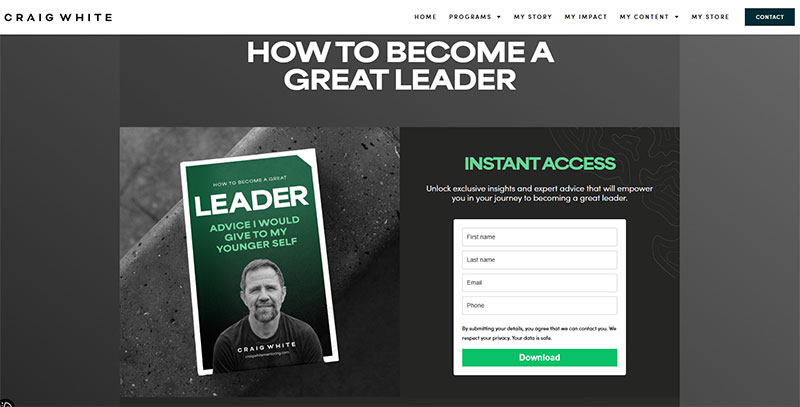
Interactive documents with fillable sections guiding users through thinking processes or planning exercises. Worksheets create active engagement with concepts.
Primary Purpose
Worksheets transform passive learning into active application. They help users organize thoughts, make decisions, and create personalized plans.
Ideal Use Cases
Coaches helping clients achieve clarity on goals.
Strategic consultants guiding planning processes.
Therapists or counselors providing structured exercises.
Educational content requiring personal application.
Key Components
Clear instructions explaining purpose and use.
Thought-provoking questions or prompts.
Adequate space for written responses.
Logical sequence building toward insights.
Summary or next-steps section.
Delivery Format
Fillable PDF forms for digital completion.
Printable PDFs for handwritten responses.
Single-page or multi-page depending on depth.
Creation Requirements
Content development and question design: 4-8 hours.
Layout and design: 3-5 hours.
Testing and refinement: 2-3 hours.
Budget: $300-800 for professional creation.
Requires understanding of effective questioning techniques.
Conversion Optimization
Similar performance to checklists as short-form written content.
Higher engagement than passive consumption formats.
Completed worksheets create investment in your methodology.
Follow up offering to review completed worksheets.
Works well as content upgrades on blog posts about the topic.
Target Audience Fit
Reflective audiences willing to invest thinking time.
Personal development and coaching niches.
Professional services requiring client self-assessment.
Middle-of-funnel prospects actively working on solutions.
Scripts
Word-for-word dialogue or language templates for specific situations. Scripts reduce anxiety by providing proven communication frameworks.
Primary Purpose
Scripts eliminate uncertainty in high-stakes conversations by providing tested language. They build confidence while ensuring key points get communicated effectively.
Ideal Use Cases
Sales training teaching conversation frameworks.
Customer service providing response templates.
Job seekers needing interview preparation.
Difficult conversation preparation (negotiations, conflict resolution).
Key Components
Context explaining when to use script.
Opening, middle, and closing structure.
Flexibility points allowing personalization.
Objection handling variations.
Tone guidance (confident, empathetic, professional).
Delivery Format
PDF document with clearly formatted dialogue.
Text files for easy copying.
Audio recordings demonstrating delivery.
Video demonstrations showing in context.
Creation Requirements
Situation analysis and research: 4-6 hours.
Script writing and refinement: 6-10 hours.
Testing and feedback incorporation: 3-5 hours.
Budget: $500-1,200 for professional scripts.
Requires expertise in communication and psychology.
Conversion Optimization
Highly specific scripts convert better than generic templates.
Target specific anxiety-producing situations.
Include multiple variations for different scenarios.
Pair with video demonstrations for effectiveness.
Niche audiences desperate for solutions convert extremely well.
Target Audience Fit
High-anxiety situations requiring exact language.
Sales professionals and customer-facing roles.
Job seekers and career transitioners.
Anyone facing unfamiliar communication situations.
Meal Plans
Detailed eating schedules with recipes, shopping lists, and nutritional information. Meal plans remove decision fatigue from healthy eating.
Primary Purpose
Meal plans simplify nutrition by providing complete dietary roadmaps. They eliminate the “what should I eat?” question that derails healthy intentions.
Ideal Use Cases
Nutritionists and dietitians building client relationships.
Fitness coaches supporting training programs.
Food bloggers offering specialized diets.
Health brands promoting lifestyle approaches.
Key Components
7-30 day schedule with specific meals.
Recipes with ingredients and instructions.
Shopping lists organized by store section.
Nutritional information and calorie counts.
Substitution options for preferences or restrictions.
Prep tips and time-saving strategies.
Delivery Format
PDF documents with recipes and lists.
Spreadsheets allowing customization.
Mobile apps for on-the-go access.
Printable calendar format for kitchen reference.
Creation Requirements
Menu planning and recipe selection: 10-15 hours.
Recipe creation or curation: 15-25 hours.
Nutritional analysis: 5-8 hours.
Design and formatting: 6-10 hours.
Budget: $1,500-3,000 for complete plan.
Requires nutritional knowledge and cooking expertise.
Conversion Optimization
Highly targeted to specific diets (keto, vegan, paleo, etc.).
Solve immediate, pressing problem (what to eat tomorrow).
Include success stories and before/after examples.
Segment by goal (weight loss, muscle gain, health condition).
Follow up with accountability tools or community access.
Target Audience Fit
Health-conscious consumers taking action.
People starting new diet or lifestyle.
Busy professionals wanting simplified nutrition.
B2C audiences in health and wellness space.
Giveaways
Contests offering prizes in exchange for entry information. Giveaways generate excitement and large lead volumes quickly.
Primary Purpose
Giveaways create viral growth through incentivized sharing while building large email lists rapidly. They generate awareness and capture broad audience interest.
Ideal Use Cases
Product launches building initial awareness.
E-commerce brands growing customer databases.
Brands entering new markets.
Social media audience expansion.
Key Components
Desirable prize relevant to target audience.
Simple entry mechanism.
Bonus entries for sharing and referrals.
Clear rules and timeline.
Winner selection and announcement process.
Delivery Format
Landing pages with entry forms.
Social media integration for viral sharing.
Email collection and follow-up automation.
Contest tracking and management software.
Creation Requirements
Contest planning and legal review: 5-8 hours.
Landing page and promotion creation: 8-12 hours.
Prize procurement and management: 3-5 hours.
Winner selection and fulfillment process: 4-6 hours.
Budget: Prize cost plus $500-2,000 setup and promotion.
Conversion Optimization
Contest forms achieve 35% conversion versus 11% for general lead generation forms.
Works primarily for B2C but can work for B2B with right prizes.
Lead quality often lower than educational content.
Massive volume compensates for lower quality.
Segment entrants by engagement level for follow-up.
Continue nurturing after contest to maintain engagement.
Target Audience Fit
B2C audiences motivated by prizes and deals.
Top-of-funnel awareness building.
Impulse-driven consumers.
Social media-active demographics.
Discounts and Coupons
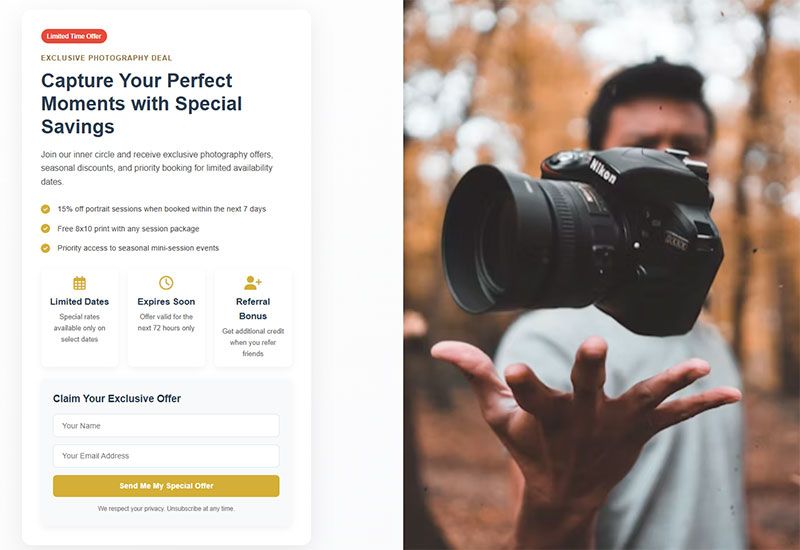
Monetary incentives reducing purchase prices. Coupons directly accelerate buying decisions through immediate savings.
Primary Purpose
Discounts remove price objections while creating urgency. They convert price-sensitive prospects into customers faster than educational content.
Ideal Use Cases
E-commerce stores acquiring first-time customers.
Service businesses filling capacity during slow periods.
Product launches incentivizing early adoption.
Abandoned cart recovery.
Key Components
Clear discount amount or percentage.
Expiration date creating urgency.
Unique codes for tracking and limiting use.
Minimum purchase requirements (if applicable).
Simple redemption process.
Delivery Format
Email delivery of discount codes.
Pop-up forms capturing emails for coupons.
SMS text message delivery.
QR codes for in-person redemption.
Creation Requirements
Discount strategy and profit calculation: 2-4 hours.
Technical setup in e-commerce platform: 1-2 hours.
Promotion design and messaging: 3-5 hours.
Budget: Discount margin plus $200-500 setup.
Conversion Optimization
Monetary value lead magnets achieve 12.3% highest conversion for B2C versus 8.4% for B2B.
Coupon pages become high-traffic conversion assets (one example: 27% conversion).
Customers using coupons spend 33% more than regular shoppers.
First-purchase coupons build customer relationships with lower lifetime acquisition cost.
Use exit-intent forms to capture abandoning visitors.
Target Audience Fit
Price-sensitive B2C consumers.
First-time buyers needing purchase incentive.
Bottom-of-funnel prospects on the edge of buying.
Retail, e-commerce, and local service businesses.
Calculators

Interactive tools performing computations revealing personalized insights. Calculators demonstrate value through customized outputs.
Primary Purpose
Calculators quantify abstract concepts making them concrete and personal. They help prospects understand problem severity or solution value through numbers.
Ideal Use Cases
Financial services showing savings or returns.
SaaS businesses demonstrating ROI.
Agencies calculating pricing or value.
Health and fitness quantifying goals or progress.
Key Components
Simple input fields collecting key variables.
Instant calculation and results display.
Explanation of methodology building trust.
Comparison context helping interpretation.
Next-step recommendations based on results.
Delivery Format
Web-based tools requiring no downloads.
Mobile-responsive for accessibility.
Embeddable on landing pages or blog posts.
Email gate for detailed results or saved calculations.
Creation Requirements
Logic design and formula development: 6-10 hours.
User interface design: 8-12 hours.
Development and testing: 15-30 hours.
Budget: $2,000-6,000 for professional calculator.
Requires domain expertise ensuring accuracy.
Conversion Optimization
Interactive calculators achieve 40% conversion versus 5% for static PDFs.
Personalized outputs create strong engagement.
Position at decision-making moments in customer journey.
Require email for detailed breakdowns or ongoing access.
Use results for lead scoring and segmentation.
Target Audience Fit
Data-driven decision makers.
Financial and ROI-conscious buyers.
Middle and bottom-of-funnel evaluation.
B2B and B2C audiences needing quantification.
Research Data and Industry Reports

Proprietary research findings and statistical analysis shared publicly. Research reports establish authority through original data contribution.
Primary Purpose
Original research positions you as industry thought leader while providing media-worthy content. Data fills information gaps competitors can’t address.
Ideal Use Cases
Market research firms showcasing capabilities.
Industry associations providing member value.
Companies with unique data access or customer bases.
Thought leaders establishing category expertise.
Key Components
Original data collection and analysis.
Statistically significant sample sizes.
Clear methodology and data sources.
Compelling insights beyond raw numbers.
Visual data presentations.
Media-friendly sound bites and statistics.
Delivery Format
Comprehensive PDF reports.
Interactive online dashboards.
Press release with key findings.
Infographics highlighting top insights.
Raw data sets for researchers.
Creation Requirements
Research design and methodology: 15-25 hours.
Data collection execution: 20-100+ hours depending on method.
Analysis and insights development: 25-40 hours.
Report writing and design: 30-50 hours.
Budget: $8,000-30,000+ for comprehensive research.
Conversion Optimization
Exclusive data commands premium value.
Media coverage amplifies reach exponentially.
Position as annual recurring research for ongoing attention.
Offer full report in exchange for detailed lead information.
Partner with complementary brands for broader distribution.
Target Audience Fit
Industry professionals requiring current data.
Executives and decision makers.
Media and journalists seeking newsworthy content.
Researchers and analysts.
Product Samples
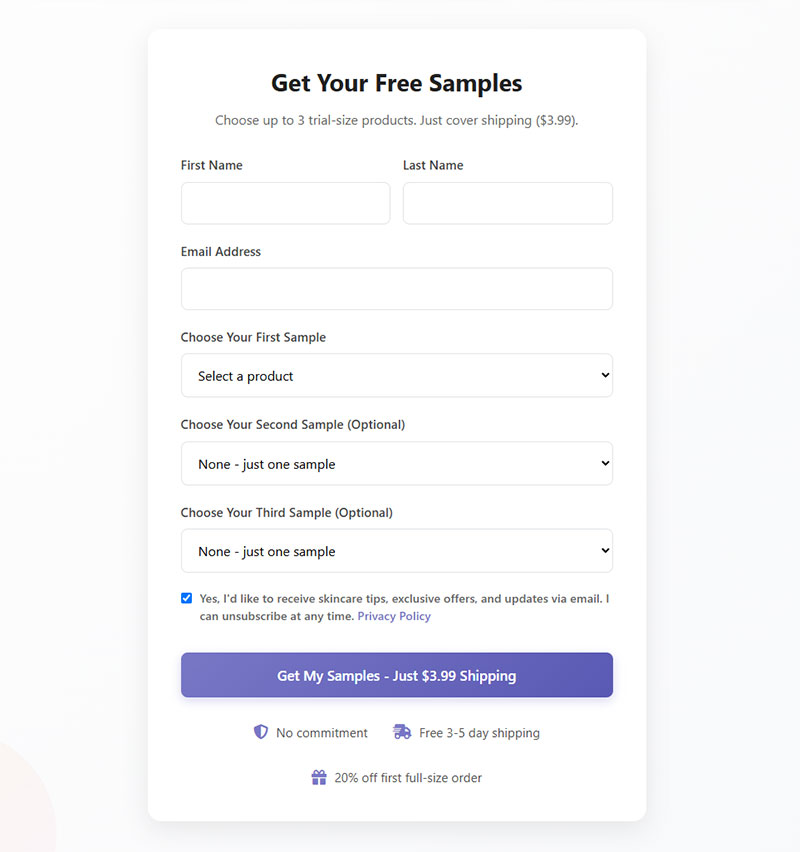
Physical or digital product portions allowing trial before purchase. Samples demonstrate quality and create reciprocity obligation.
Primary Purpose
Samples eliminate purchase uncertainty by providing direct product experience. They convert skeptics into believers through tangible proof.
Ideal Use Cases
Beauty and cosmetics showing product quality.
Food and beverage demonstrating taste.
Software offering limited feature access.
Physical products where touch and feel matter.
Key Components
Sufficient quantity demonstrating full experience.
Packaging maintaining brand quality perception.
Usage instructions maximizing satisfaction.
Clear path to full-size purchase.
Feedback mechanism gathering insights.
Delivery Format
Physical mailings requiring shipping addresses.
Digital downloads for software/content.
In-store pickup for local sampling.
Event distribution at trade shows or markets.
Creation Requirements
Sample production or packaging: varies by product.
Shipping logistics and costs: $3-10 per sample.
Landing page and fulfillment automation: 8-12 hours.
Budget: Product cost plus $500-2,000 setup and fulfillment per batch.
Conversion Optimization
Monetary value lead magnets (including samples) show strong B2C performance.
Higher upfront cost than digital lead magnets.
Quality of sample critical to conversion.
Follow up quickly while product is still being used.
Include purchase incentive in sample package.
Track conversion rates by sample variant.
Target Audience Fit
Purchase decisions where experience drives buying.
Premium products needing quality demonstration.
Skeptical audiences requiring proof.
B2C primarily, some B2B (especially physical products).
Challenges
Time-bound structured activities guiding participants toward specific goals. Challenges build community while driving engagement through accountability.
Primary Purpose
Challenges create momentum and community around goal achievement. They compress action into focused timeframes producing visible results.
Ideal Use Cases
Fitness and health transformations.
Creative skill development (photography, writing, art).
Business growth activities (30-day launches).
Habit formation and behavior change.
Key Components
Clear goal and success criteria.
Daily or regular action steps.
Community participation for accountability.
Progress tracking mechanisms.
Educational content supporting success.
Celebration and recognition for completion.
Delivery Format
Email sequences with daily instructions.
Private community groups (Facebook, Slack).
Mobile apps tracking progress.
Live check-ins or coaching calls.
Resource library with supporting materials.
Creation Requirements
Challenge design and curriculum: 15-25 hours.
Content creation for each day/step: 30-50 hours.
Community platform setup: 5-10 hours.
Email automation and delivery: 8-12 hours.
Budget: $2,000-5,000 for complete challenge.
Conversion Optimization
High engagement creates strong relationships.
Participants become invested in your methodology.
Natural transition to paid programs or products.
Community builds social proof and referrals.
Completion rates indicate genuine interest level.
Offer next-level challenges or products upon completion.
Target Audience Fit
Action-oriented individuals ready for change.
Community-motivated participants.
Middle-of-funnel prospects testing your approach.
Health, fitness, business, and creative industries.
Resource Libraries
Curated collections of multiple resources organized by topic or use case. Libraries position you as comprehensive knowledge hub.
Primary Purpose
Resource libraries aggregate valuable content eliminating need to search multiple sources. They create ongoing engagement through depth and breadth.
Ideal Use Cases
Educational businesses supporting self-learners.
Industry platforms serving professional communities.
Agencies demonstrating breadth of expertise.
Membership sites offering preview of full content.
Key Components
Organized categories or search functionality.
Mix of content types (articles, templates, tools, videos).
Regular updates adding fresh content.
Clear value proposition for each resource.
Gated access requiring registration.
Delivery Format
Membership sites with login access.
Password-protected web pages.
Regularly updated content repository.
Mobile and desktop accessibility.
Creation Requirements
Content curation and creation: 40-80 hours initial setup.
Website development and organization: 15-25 hours.
Ongoing content additions: 5-10 hours monthly.
Budget: $3,000-8,000 initial setup plus ongoing content costs.
Conversion Optimization
Higher perceived value through volume.
Ongoing access creates repeated engagement.
New additions provide reasons for continued communication.
Segment resources by user type for personalization.
Track most popular resources for lead scoring.
Use access as stepping stone to paid membership.
Target Audience Fit
Self-directed learners valuing comprehensiveness.
Professionals needing ongoing reference materials.
Industries requiring constant skill updates.
Both B2B and B2C depending on content depth.
Swipe Files
Collections of proven examples others can reference and adapt. Swipe files provide inspiration and templates from successful campaigns.
Primary Purpose
Swipe files shortcut learning curve by showing what actually works. They provide concrete examples rather than abstract advice.
Ideal Use Cases
Marketing agencies sharing campaign examples.
Copywriters providing proven templates.
Designers showing layout inspirations.
Sales professionals offering email and call scripts.
Key Components
Real examples from successful campaigns.
Variety showing different approaches and styles.
Context explaining why examples work.
Permission for adaptation and inspiration.
Organization by category or use case.
Delivery Format
PDF collections with screenshots and examples.
Google Docs or Notion databases.
Password-protected web pages.
Regularly updated living documents.
Creation Requirements
Example collection and curation: 15-25 hours.
Context and analysis writing: 10-15 hours.
Organization and formatting: 8-12 hours.
Design and presentation: 6-10 hours.
Budget: $1,500-3,500 for comprehensive swipe file.
Conversion Optimization
Highly valuable to practitioners doing similar work.
Lower creation effort when curating versus creating.
Build authority through curation and analysis skills.
Add new examples regularly for ongoing value.
Segment by experience level or industry.
Natural lead-in to consulting or training services.
Target Audience Fit
Practitioners implementing similar strategies.
Beginners needing proven starting points.
Creative professionals seeking inspiration.
Industries where modeling success is common (marketing, sales, design).
FAQ on Types Of Lead Magnets
What type of lead magnet converts best?
Webinars achieve the highest conversion rate at 70.2% among long-form video formats. For written content, guides convert at 67.2%, followed by reports at 49.2%. Short-form content like checklists and templates outperform longer formats according to 58.6% of marketers.
Which lead magnet types work best for B2B?
Whitepapers, case studies, and webinars dominate B2B lead generation. Whitepapers convert at 37.7% with 91% of IT buyers rating them highly effective. Free consultations and research reports also perform well for complex B2B sales cycles.
What’s the easiest lead magnet to create?
Checklists and templates require minimal time investment (2-4 hours) while delivering strong conversion rates. They cost under $200 to produce in-house and provide immediate value. Cheat sheets offer similar creation simplicity with quick reference utility.
How long should an ebook lead magnet be?
Effective ebooks range from 5,000-10,000 words. Length matters less than value delivered. Short-form ebook samples actually convert at 100% according to research, outperforming comprehensive guides when targeting specific problems with actionable solutions.
Do free trials work as lead magnets?
Free trials excel in middle-of-funnel conversion for SaaS products. They work best post-demo or after webinar registration when prospects understand their problem. Usage data helps identify high-intent leads for sales outreach and personalized follow-up.
What lead magnet types work for ecommerce?
Discounts and coupons achieve highest B2C conversion at 12.3%. Customers using coupons spend 33% more than regular shoppers. Product samples, giveaways, and shopping guides also drive ecommerce lead generation effectively with lower qualification requirements.
Are quizzes effective lead magnets?
Quizzes average 31.6% lead capture rate with top performers hitting 38.8%. They segment audiences while entertaining them. One business saw 400% subscriber increase after adding quizzes. Question friction filters quality leads while providing personalized results prospects value.
How many lead magnets should I offer?
Start with one targeted lead magnet addressing your audience’s primary pain point. Test performance before expanding. Multiple lead magnets work when serving distinct audience segments or funnel stages. Quality beats quantity—one excellent offer outperforms several mediocre options.
What makes a lead magnet high-converting?
Specificity drives conversion. Address one clear problem with immediate solutions. Keep form fields to 3-4 for optimal 35% conversion versus 25% with 5-7 fields. Promise achievable outcomes, deliver instant value, and match offer to audience readiness level.
How do I promote my lead magnet effectively?
Email marketing delivers highest channel-to-lead conversion rates across industries. Place offers on high-traffic blog posts as content upgrades. Use exit-intent popups capturing abandoning visitors. For webinars, promote 4 weeks early for 12% higher registrations.
Conclusion
Choosing the right types of lead magnets determines whether your email list stagnates or grows exponentially. Each format serves different audience segments and funnel stages.
Webinars and guides deliver highest conversion rates but require substantial creation time. Checklists and templates offer quick wins with minimal resource investment.
Your ideal lead magnet matches three criteria: solves a specific audience problem, demonstrates your unique expertise, and naturally leads to your paid offerings. Start with one targeted opt-in offer rather than creating multiple mediocre options.
Test different formats using lead capture forms optimized for conversion. Track which types generate the most qualified leads, not just the highest volume.
The businesses winning at list building aren’t using more lead magnets. They’re using smarter ones.
